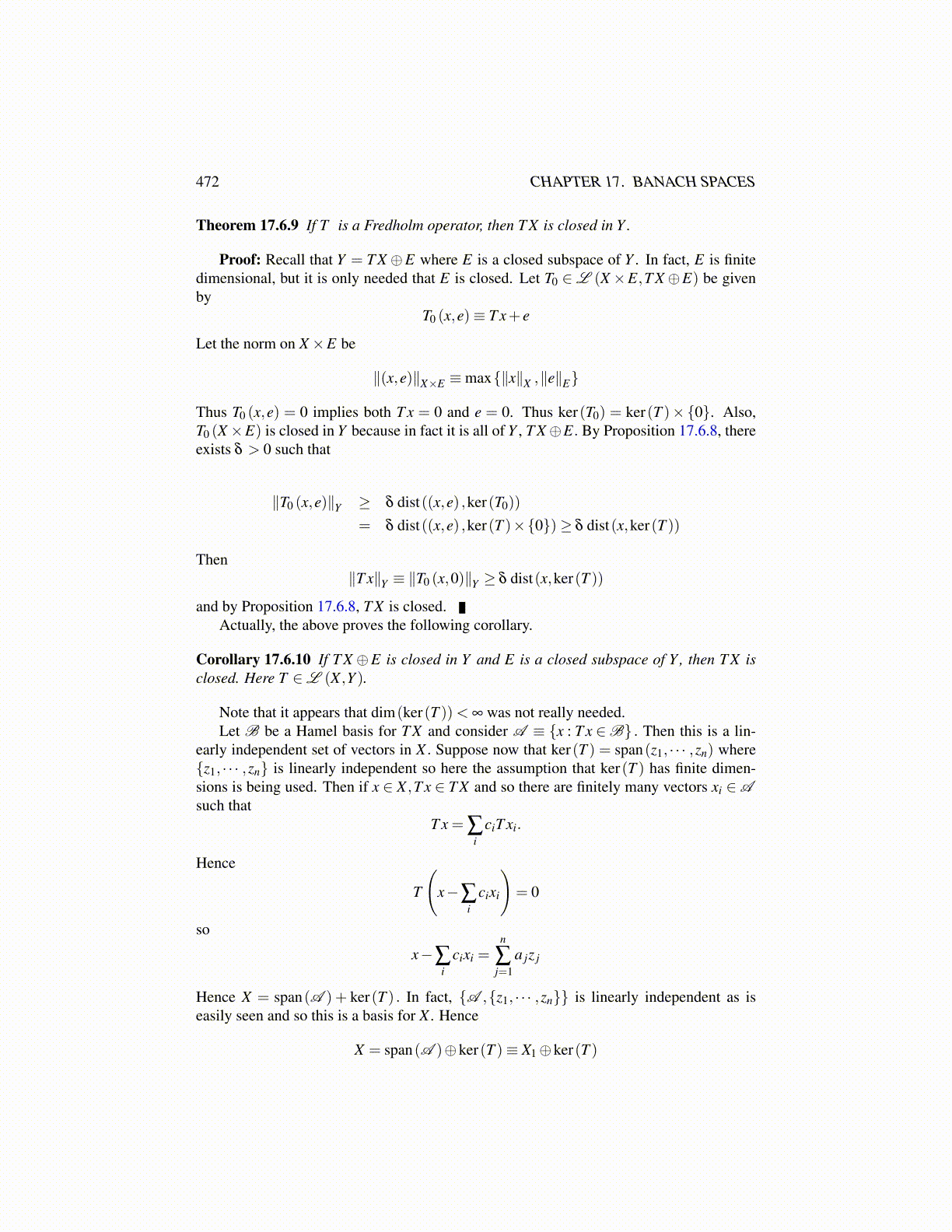
472 CHAPTER 17. BANACH SPACES
Theorem 17.6.9 If T is a Fredholm operator, then T X is closed in Y .
Proof: Recall that Y = T X ⊕E where E is a closed subspace of Y . In fact, E is finitedimensional, but it is only needed that E is closed. Let T0 ∈L (X×E,T X⊕E) be givenby
T0 (x,e)≡ T x+ e
Let the norm on X×E be
∥(x,e)∥X×E ≡max{∥x∥X ,∥e∥E}
Thus T0 (x,e) = 0 implies both T x = 0 and e = 0. Thus ker(T0) = ker(T )×{0}. Also,T0 (X×E) is closed in Y because in fact it is all of Y , T X⊕E. By Proposition 17.6.8, thereexists δ > 0 such that
∥T0 (x,e)∥Y ≥ δ dist((x,e) ,ker(T0))
= δ dist((x,e) ,ker(T )×{0})≥ δ dist(x,ker(T ))
Then∥T x∥Y ≡ ∥T0 (x,0)∥Y ≥ δ dist(x,ker(T ))
and by Proposition 17.6.8, T X is closed.Actually, the above proves the following corollary.
Corollary 17.6.10 If T X ⊕E is closed in Y and E is a closed subspace of Y , then T X isclosed. Here T ∈L (X ,Y ).
Note that it appears that dim(ker(T ))< ∞ was not really needed.Let B be a Hamel basis for T X and consider A ≡ {x : T x ∈B} . Then this is a lin-
early independent set of vectors in X . Suppose now that ker(T ) = span(z1, · · · ,zn) where{z1, · · · ,zn} is linearly independent so here the assumption that ker(T ) has finite dimen-sions is being used. Then if x ∈ X ,T x ∈ T X and so there are finitely many vectors xi ∈Asuch that
T x = ∑i
ciT xi.
Hence
T
(x−∑
icixi
)= 0
so
x−∑i
cixi =n
∑j=1
a jz j
Hence X = span(A ) + ker(T ) . In fact, {A ,{z1, · · · ,zn}} is linearly independent as iseasily seen and so this is a basis for X . Hence
X = span(A )⊕ker(T )≡ X1⊕ker(T )